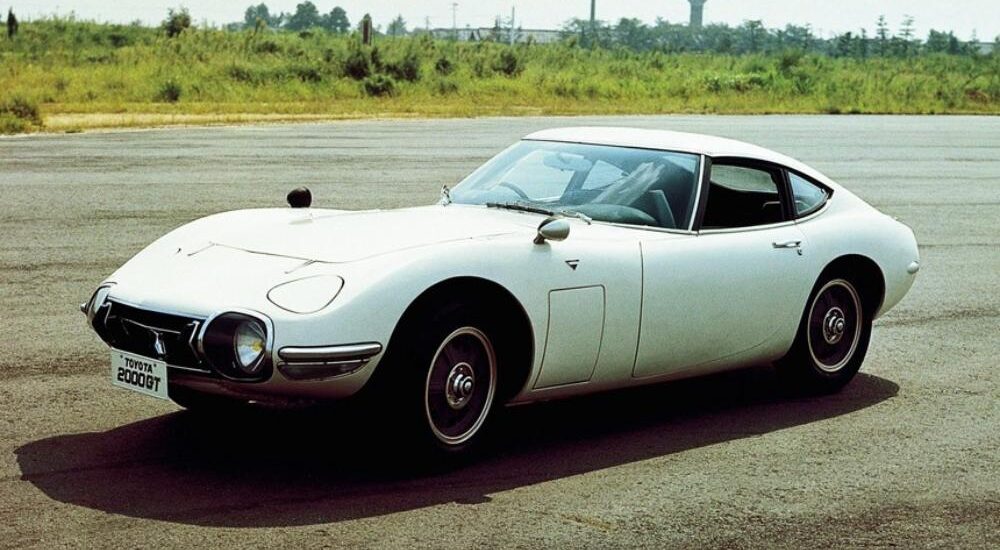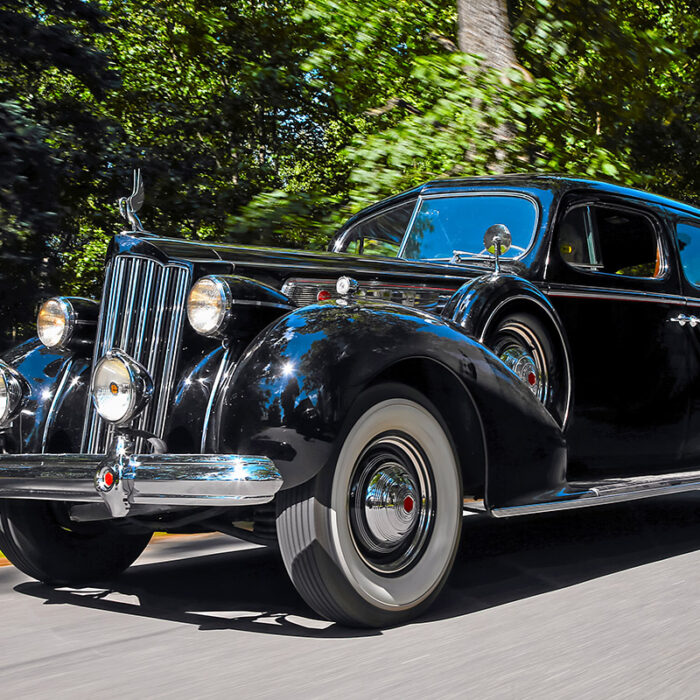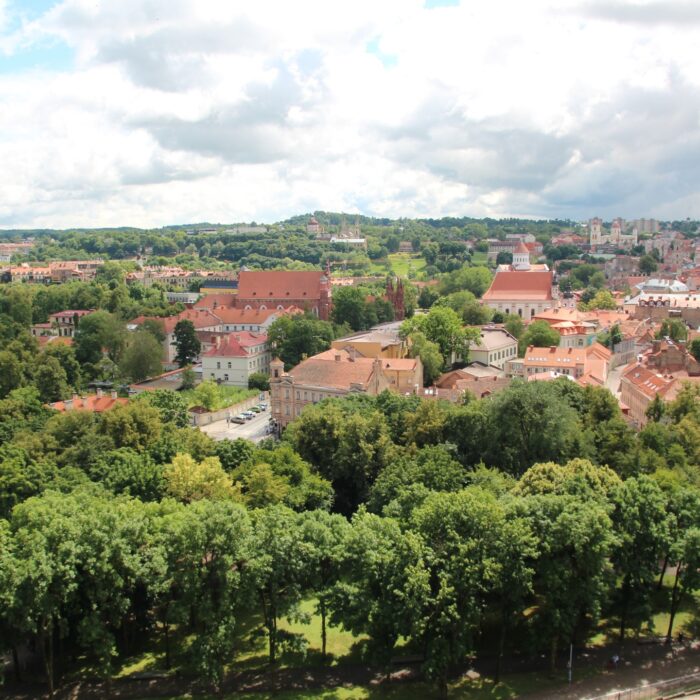The new Toyota Supra is about to be unveiled: we’ve already seen the pre-production models and delved into their details. To create this model, Toyota sought support from BMW, which provided the chassis, engine, and transmission. In fact, the new Supra shares only its design and tuning with Toyota. However, this approach to creating a sports car is not new for Toyota. This isn’t just about the modern GT86 coupe, developed together with Subaru. If we dig a little deeper, we find that this experience dates back more than half a century! After all, the beautiful Toyota 2000GT coupe of the 1960s is also the result of a joint effort.
Toyota itself launched the 280A project in May 1964. However, the story of the resulting car began a little earlier—in October 1962. It was then that Nissan and Yamaha initiated a joint development to create a lightweight sports coupe. Initially, the 1960 Datsun Fairlady roadster served as the base, but its design was quickly transformed beyond recognition: a closed body was introduced with two subframes instead of a separate frame, disc brakes were added to all four wheels instead of drum brakes, and the weak 1.2-liter overhead-valve engine was replaced with a more robust two-liter unit with dual overhead camshafts.
Nissan’s involvement in the project was limited to the designers who oversaw the appearance and interior, while all engineering work was handled by Yamaha’s specialists. In the spring of 1964, the construction of prototype vehicles began. However, by that time, Nissan had already lost interest in the joint project, focusing instead on its own Silvia coupe, which was technically similar to the old Fairlady model.

The second prototype of the Yamaha A550X in the company’s factory yard.

But Yamaha didn’t abandon the project! Their engineers perfected the two-liter XY80 engine, which featured two Solex carburetors and produced around 120 hp. In August-September 1964, two Yamaha A550X prototypes with steel bodies were completed, differing in design elements and color (white and black).
By the way, there’s a legend suggesting that German designer Albrecht Goertz—creator of the BMW 507 roadster and one of the stylists for the Porsche 911—participated in the design work. While Nissan did indeed involve him in the Fairlady and Silvia models, there’s no concrete evidence of his involvement in the A550X project. Even Goertz’s autobiography only vaguely refers to a “two-liter sports car for the American market,” so attributing the design of the Yamaha sports car to him is not accurate.

Third prototype of Yamaha A550X
Both built vehicles were handed over to Nissan under the contract. However, a third prototype was also planned! Yamaha tasked an external company, GK Design, with assembling this vehicle. It differed from the first two with a fiberglass body in red—and the company had quite different plans for this coupe.
Now, let’s return to Toyota’s ambitious plans. The company needed a prestigious vehicle that would showcase its capabilities on the global stage. After winning the 1963 Japanese Grand Prix, Toyota’s leadership had no doubts: this needed to be a sports car the size of a Porsche 911, with the same prestige as Jaguars of the era.

Early sketches of the 280A project
To develop such a car, in the spring of 1964, Toyota created a special division, headed by racing director Jiro Kawano. He assembled a team of five engineers and was essentially given carte blanche, working separately from the mass model developers with minimal oversight. However, the deadlines were tight: the project had to be ready on paper by November, and a 1:5 scale model had to be presented by December.

First mock-up of Project 280A (late 1964)
Since Toyota had no experience developing sports cars, Kawano’s team purchased several cars for study. Naturally, these included the Porsche 911 and the Jaguar E-Type, but they were also accompanied by the Lotus Elan, MGB, Triumph TR2, and Honda S600. By examining these cars, the engineers not only learned from the good solutions but also figured out what not to do. For example, they immediately discarded the rear-engine layout of the Porsche. But they took the Lotus’ backbone X-frame as inspiration.

Left – Toyota 2000GT coupe chassis, right – Lotus Elan roadster

Toyota 2000GT coupe chassis
As often happens, keeping the project a secret was impossible. Yamaha quickly caught wind of it, and by September 1964, Yamaha president Genichi Kawakami rushed to meet with Toyota’s management to present his finished design. Soon, Toyota’s development team visited Yamaha’s facility to inspect the red A550X coupe that Nissan didn’t claim.
As Toyota engineers later recalled, they initially found the situation rather disappointing: the engine was separate from the car, and they couldn’t drive it right away. However, Yamaha had full documentation for the vehicle, and more importantly, they were eager to complete the project and outperform Nissan. It seems that Toyota had already realized the enormity of the task they had taken on, which led to a contract with Yamaha for joint development of the sports car, signed on December 28, 1964.


But this didn’t mean that Toyota and Yamaha quickly turned the A550X prototype into the future Toyota 2000GT. The process of adapting the existing design to Toyota’s requirements and desires began. For example, the car’s appearance was finalized by the end of 1964, meaning that it differs significantly from the Yamaha vehicle. Incidentally, although Japanese companies tend to avoid personalizing the design of their cars, enthusiasts later uncovered that the designer of the 2000GT was Satoru Nozaki, a Japanese who had studied in California and had joined the project team from the outset.
The partners also rejected Yamaha’s four-cylinder engine in favor of Toyota’s M-series inline-six engine, with a 2.0L displacement, the same engine used in Toyota Crown sedans. However, Yamaha engineers were tasked with further developing the engine. Ultimately, the chassis from the A550X, with double wishbone suspension all around, and the overall body construction were retained.

Assembly of the first prototype within the walls of Yamaha
The engineers worked at full speed, and by April 1965, Yamaha’s shop began manufacturing the first running prototype under the 280A/I code. The car rolled out of the factory gates in the middle of summer and immediately went into testing. And it was quite successful! Even Toyota’s own drivers, after testing the coupe on the track, had no major complaints about the car’s setup, although development head Kawano noted some instability at high speeds. Nevertheless, for a first prototype, it was a success.

On the left is the first finished body, on the right is the first exit of the completed prototype from the workshop
The car’s aerodynamic design is worth mentioning. Toyota didn’t conduct wind tunnel tests, and the engineers shaped the body as best as they could by intuition. However, many years later, tests revealed that the Toyota 2000GT had an aerodynamic drag coefficient of just 0.28. Even by today’s standards, that’s impressive, especially when compared to the Lamborghini Miura of the same period, which had a drag coefficient of 0.37. Interestingly, despite its beauty and futuristic design, some of the car’s exterior elements had quite unexpected origins. For example, the stylish round rear lights were actually identical to those used on Toyota’s production buses.

Meanwhile, the second prototype was sent straight to Toyota’s stand at the Tokyo Motor Show, where the world premiere of the new coupe took place in October 1965. Early prototypes had a few differences from the production model: for example, they featured three windshield wipers, different retractable headlight housings, and the windscreen pillar bases were shifted 40mm further into the door opening (later relocated to make it easier to enter and exit).

Toyota 2000GT at the 1965 Tokyo Motor Show

Final adjustments and preparation for production took another year and a half, and the first production cars were ready by March 1967. Yamaha was tasked with the car’s production, setting up three new workshops for body parts, engines, and final assembly. Many components were sourced from Toyota’s factories, and the transmission was supplied by Aisin. However, the cars were largely assembled by hand. Given that this was Yamaha’s first experience with automobile production, Toyota took responsibility for quality control.

Assembly of commercial vehicles…

…and acceptance of the vehicle after a test drive
The Toyota 2000GT was a cutting-edge vehicle for its time. The two-liter six-cylinder engine, after further refinement by Yamaha’s engineers, was equipped with a twin-cam cylinder head and three twin-chamber Mikuni-Solex carburetors. While the original engine produced 105-125 hp depending on the version, the sports coupe’s output reached 150 hp and 177 Nm. Additionally, this engine had excellent high-revving capabilities.

The length of the coupe is 4175 mm, the height is 1160 mm
The team also had trouble finding a suitable transmission from Toyota’s “passenger car” range (due to restrictions in the frame width), so they used a transmission from a truck, which was narrow and had a strong margin of safety. They had to add a fifth gear to the box. The Toyota 2000GT featured a limited-slip differential and, for the first time in Japanese automotive history, disc brakes on all four wheels. The car weighed 1,120 kg, had a top speed of 220 km/h, and could accelerate to 60 mph (97 km/h) in 10.1 seconds.

The main headlights are retractable, and fog lights are installed under transparent fairings.
Another source of pride for the developers was the interior. Yamaha’s musical instrument division was involved in its production. As a result, the Toyota 2000GT featured high-quality wood trim with excellent fitting. The wooden steering wheel rim was also made by Yamaha’s “musicians.”

It’s no surprise that the sports car was very expensive. The price in Japan was ¥2.38 million—more than enough to buy two Toyota Crown sedans or six Toyota Corolla sedans, which were not exactly affordable at the time. In the U.S., the car was priced at $6,800, whereas the Porsche 911 coupe started at $6,490—and Porsche already had an established name, while Toyota was still closely associated with affordable compact cars in the U.S.

In the fall of 1967, with the help of Kanto Auto, an experimental, cheaper version of the coupe was built. It had different lighting and a radiator grille, and instead of wood trim, plastic was used in the interior. The experiment was considered unsuccessful.
Taking into account the labor-intensive hand assembly, it’s clear why only 351 units of the Toyota 2000GT were produced by the fall of 1970 (including prototypes for testing). Of these, only 58 were sold in the U.S., nearly all in 1967. A total of 115 units were exported.
The entire production can be roughly divided into two series. The first was produced for just a year (233 units), while in April 1968, an updated version was released with a slightly changed front design (the fog lights became smaller and visually merged with the air intake). A total of 109 units were produced by October 1970, including a few versions with a three-speed “automatic” (introduced in the summer of 1969). The remaining nine units were a simplified version with a 2.3L engine featuring a single camshaft, producing 140 hp and 201 Nm. These were never sold.

Toyota 2000GT second series

There were also versions without a roof, created specifically for the world-famous movie spy, James Bond. The 1967 film “You Only Live Twice” was shot in Japan, with Toyota as one of the main sponsors. Of course, having the latest sports car appear on screen would be great advertising! However, there were unexpected issues with the Toyota 2000GT. Sean Connery, who played Agent 007, was 1.88 meters tall and simply didn’t fit into the cramped interior of the Japanese coupe!
To solve the problem, a Targa version was built with a removable roof panel above the passengers’ heads. However, in this car, the tall Sean Connery looked comical: his head towered above the windshield and rear fairing. So, within two weeks, Toyota’s craftsmen transformed the Targa into a full-fledged roadster for filming. Due to the tight schedule, they didn’t make a soft top for it, but they did install a mock-up of a luggage compartment behind the seats. Additionally, the car had a removable windshield for easier camera placement.

The first manufactured roadster and Sean Connery on the set of the film

The second manufactured roadster, this car remained in the collection of the Toyota company museum
Later, a second roadster was made for promotional purposes, but this version was never mass-produced. Some owners of the coupe later converted their cars into open versions “like Bond’s.” Additionally, in the 1980s, the Targa version was recreated based on the original blueprints.

Today, the Toyota 2000GT is considered the most expensive Japanese retro car: at auctions, these cars sell for over a million dollars! However, Toyota’s experience with the 2000GT model severely dampened their interest in serious sports cars for a long time. The next six-cylinder coupe didn’t appear until 1978—the relatively mass-produced Toyota Celica Supra series A40. As for high-end supercars, the company returned to this market only in the 21st century, through its luxury division, Lexus.
Photo: 2000gt.net | autowp.ru | csp311.net | Toyota
This is a translation. You can read the original article here: Совместная работа: спорткар Toyota 2000GT как прародитель Супры

Published May 15, 2025 • 10m to read





